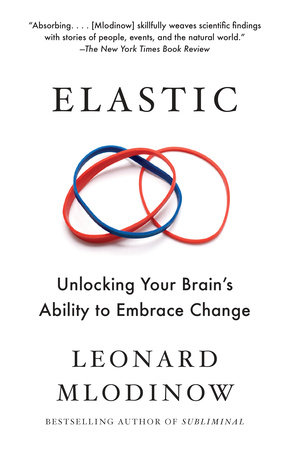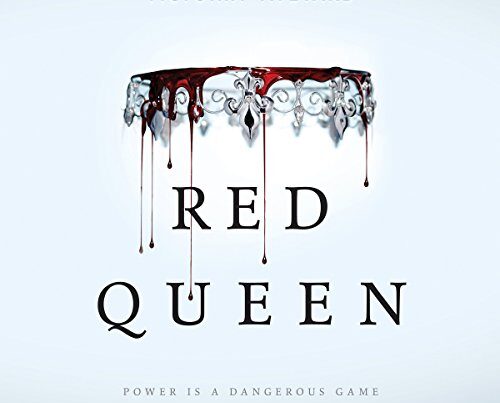**Leonard Mlodinow’s “Elastic” audiobook explores the power of flexible thinking. It delves into how adaptability shapes our lives and creativity.
** **** Leonard Mlodinow’s “Elastic” audiobook presents the concept of flexible thinking in a compelling and accessible manner. It examines how adaptability influences our problem-solving skills and creativity. Mlodinow, a renowned physicist and author, offers insights backed by scientific research. Readers learn how to harness elastic thinking to navigate an ever-changing world.
The audiobook is a blend of engaging storytelling and practical advice. It encourages listeners to embrace uncertainty and think outside the box. By understanding the principles of elastic thinking, individuals can improve their decision-making and innovation capabilities. Mlodinow’s narrative style makes complex topics easy to grasp. This audiobook is a valuable resource for anyone looking to enhance their cognitive flexibility.
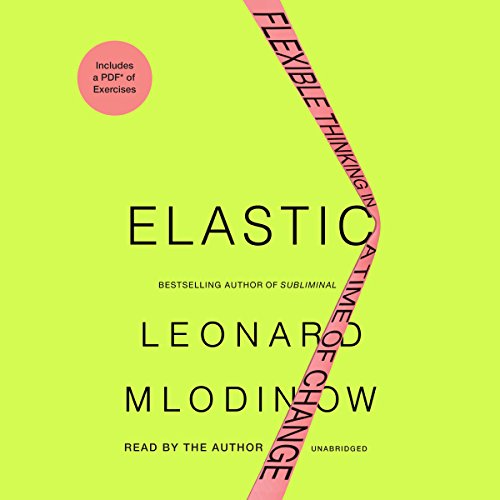
Introduction To ‘elastic’
Leonard Mlodinow’s audiobook, ‘Elastic’, dives into the world of flexible thinking. It explores how we can adapt and thrive in a rapidly changing environment. This engaging book is perfect for anyone interested in psychology, neuroscience, and self-improvement.
Leonard Mlodinow’s Inspiration
Leonard Mlodinow, a physicist and author, has always been fascinated by the human mind. His inspiration for ‘Elastic’ came from observing how people adapt to new situations. He wanted to understand the science behind this flexibility.
Mlodinow’s background in physics and mathematics plays a crucial role. It helps him explain complex ideas in simple ways. He uses real-life examples and scientific studies to support his points.
Overview Of ‘elastic’
‘Elastic’ is divided into several chapters, each focusing on different aspects of flexible thinking. Below is an overview of the main topics covered:
| Chapter | Topic |
|---|---|
| 1 | The Science of Flexible Thinking |
| 2 | How to Develop Elastic Thinking |
| 3 | Real-Life Applications |
In the first chapter, Mlodinow explains the science behind flexible thinking. He introduces concepts from neuroscience and psychology. The second chapter provides practical tips for developing this skill. The third chapter explores real-life applications of elastic thinking.
The audiobook is filled with engaging stories and examples. It is designed to be both informative and entertaining. Mlodinow’s clear and concise style makes complex topics easy to understand.
If you are curious about how to adapt and thrive, ‘Elastic’ is a must-read. It offers valuable insights and practical advice for everyone.
The Science Behind Elastic Thinking
Leonard Mlodinow’s audiobook, Elastic, delves into the fascinating realm of elastic thinking. This concept explores how our minds adapt, innovate, and solve problems in a dynamic world. Discover how elastic thinking contrasts with traditional linear thinking.
Defining Elastic Thinking
Elastic thinking is the ability to stretch your mind. It helps you view problems from new angles. This type of thinking values creativity and adaptability. It allows you to think outside the box. Elastic thinking is crucial in an ever-changing world.
Our brains use elastic thinking to break free from rigid patterns. This thinking style embraces uncertainty and ambiguity. It encourages exploring multiple solutions. Elastic thinkers are curious, open-minded, and flexible. They thrive in environments of change and novelty.
Contrast With Linear Thinking
Linear thinking follows a straight path. It focuses on logical steps and sequences. This approach is systematic and methodical. Linear thinkers prefer clear rules and structured solutions. They excel in stable, predictable environments.
| Elastic Thinking | Linear Thinking |
|---|---|
| Flexible and adaptable | Structured and methodical |
| Open to new ideas | Follows established rules |
| Embraces uncertainty | Prefers predictability |
| Encourages creativity | Relies on logic |
Elastic thinking is essential for innovation. It helps you adapt to rapid changes. Linear thinking is important for tasks requiring precision. Each thinking style has its place. Together, they create a balanced approach to problem-solving.
Real-world Applications Of Elastic Thinking
Leonard Mlodinow’s audiobook, Elastic, delves into the fascinating world of elastic thinking. This concept helps us adapt to new situations and solve problems. Let’s explore how this thinking style applies to real-world scenarios.
Innovation And Creativity
Elastic thinking fuels innovation and creativity. It encourages us to break free from traditional thinking. By thinking differently, we can create new products and ideas.
- Businesses use elastic thinking to stay competitive.
- Artists use it to create unique works.
- Scientists use it to make breakthroughs.
In the tech industry, elastic thinking leads to cutting-edge inventions. For example, smart devices and AI are products of such thinking. Elastic thinking is a driving force behind progress and change.
Problem Solving In Daily Life
Elastic thinking is not just for big innovations. It helps us with daily problem-solving. When faced with a challenge, elastic thinking allows us to see multiple solutions.
- Identify the problem clearly.
- Think of all possible solutions.
- Choose the most effective one.
Imagine you are stuck in traffic. Elastic thinking might suggest an alternate route. Or perhaps a new way to spend your time, like listening to an audiobook. This flexible thinking makes daily life smoother and more enjoyable.
Here’s a table to illustrate how elastic thinking helps in different scenarios:
| Situation | Elastic Thinking Solution |
|---|---|
| Running late for a meeting | Suggests virtual meeting option |
| Cooking without an ingredient | Finds a substitute ingredient |
| Stuck in a creative block | Tries a different art form |
Leonard Mlodinow’s Elastic audiobook is a treasure trove of such insights. It shows how elastic thinking can transform our lives.
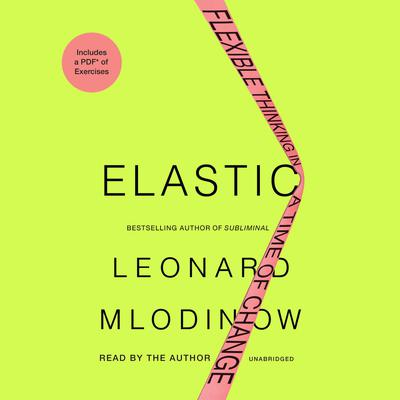
Key Concepts From The Audiobook
Leonard Mlodinow’s audiobook, Elastic, dives into the fascinating world of human thought processes. It explores how our minds adapt, change, and innovate. Let’s delve into some key concepts from this insightful audiobook.
Neuroplasticity
Neuroplasticity is the brain’s ability to reorganize itself. This happens by forming new neural connections. It allows the brain to adjust to new experiences.
Here are some key points about neuroplasticity:
- It helps in learning new skills.
- It aids in recovering from brain injuries.
- It enables adaptation to new environments.
Neuroplasticity supports our ability to think creatively and solve problems. It is essential for personal growth and development.
The Role Of Unconscious Processes
Our brains constantly process information beneath our awareness. These unconscious processes influence our decisions and actions.
Consider the following aspects of unconscious processes:
| Aspect | Description |
|---|---|
| Automaticity | Performing tasks without conscious thought. |
| Intuition | Making quick judgments based on past experiences. |
| Emotional Responses | Reacting to situations based on emotions. |
These processes help us handle complex environments efficiently. They allow us to make quick, effective decisions.
Understanding these processes can enhance our self-awareness and decision-making.
Insights On Navigating Modern Challenges
Leonard Mlodinow’s Elastic Audiobook offers valuable insights for today’s fast-paced world. The book helps readers adapt to rapid changes and manage modern challenges effectively. Here, we explore key insights on adapting to technological advances and coping with information overload.
Adapting To Technological Advances
Technology evolves rapidly, impacting our daily lives. Mlodinow emphasizes the need for flexibility. Embracing new technologies can lead to better opportunities. Here are some tips to stay ahead:
- Stay Curious: Always seek to learn new things.
- Stay Updated: Follow the latest tech trends.
- Embrace Change: Adapt to new tools and methods.
By being open to change, we can harness the power of technology. This allows us to solve problems more effectively.
Coping With Information Overload
We are bombarded with information every day. This can feel overwhelming. Mlodinow offers strategies to manage this influx:
- Prioritize: Focus on what is most important.
- Filter: Use tools to block unnecessary information.
- Take Breaks: Give your mind time to rest.
Using these strategies can reduce stress. It helps to maintain clarity and focus. By managing information better, we can improve productivity and well-being.
| Challenge | Strategy |
|---|---|
| Technological Advances | Stay Curious, Stay Updated, Embrace Change |
| Information Overload | Prioritize, Filter, Take Breaks |
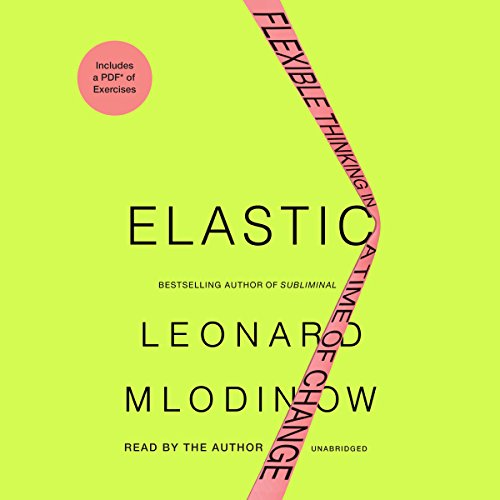
Influential Personalities And Elastic Thinking
Leonard Mlodinow’s audiobook, Elastic, delves into the magic of elastic thinking. This type of thinking is flexible, adaptive, and creative. It has shaped the lives of many influential personalities throughout history.
Historical Figures
Many historical figures demonstrate the power of elastic thinking. These people changed the world with their innovative ideas.
- Albert Einstein: He imagined new ways to understand the universe.
- Leonardo da Vinci: He combined art and science in unique ways.
- Marie Curie: She broke barriers in science with her discoveries.
Contemporary Examples
Today’s influential personalities also showcase elastic thinking. They continue to inspire with their groundbreaking ideas.
- Elon Musk: He pushes the limits of technology and space travel.
- Malala Yousafzai: She fights for girls’ education worldwide.
- Tim Berners-Lee: He invented the World Wide Web, changing how we communicate.
Practical Exercises To Develop Elastic Thinking
Leonard Mlodinow’s audiobook, Elastic, delves into the power of elastic thinking. This flexible way of thinking helps you adapt and thrive in a rapidly changing world. To cultivate this skill, Mlodinow suggests practical exercises that fit into your daily routine. Here are some effective methods to develop elastic thinking.
Daily Habits
Daily habits play a crucial role in developing elastic thinking. Here are some easy-to-implement practices:
- Read Diversely: Explore different genres and subjects. This broadens your perspective.
- Challenge Assumptions: Question your usual way of thinking. Ask “why” and “what if” more often.
- Learn Something New: Pick up a new hobby or skill. This keeps your brain flexible.
Mindfulness And Meditation
Mindfulness and meditation are powerful tools to enhance elastic thinking. These practices help you stay present and open-minded. Here’s how you can incorporate them:
| Practice | Description |
|---|---|
| Mindful Breathing | Focus on your breath. Notice each inhale and exhale. |
| Body Scan | Pay attention to different parts of your body. Notice any sensations. |
| Guided Meditation | Use apps or videos for guided sessions. This can help you stay consistent. |
By integrating these exercises into your routine, you can develop elastic thinking. This will help you navigate the complexities of modern life with ease and creativity.
Implications For Future Innovations
Leonard Mlodinow’s audiobook, Elastic, delves into the power of flexible thinking. This concept has profound implications for future innovations across various sectors. The ability to adapt and think creatively will shape the world of tomorrow.
Predictions And Possibilities
Elastic thinking can lead to breakthroughs in technology and science. It encourages unconventional solutions to complex problems. Future innovations may include:
- Artificial Intelligence advancements with more human-like reasoning.
- Medical breakthroughs through novel approaches to research.
- Sustainable energy solutions by reimagining existing technologies.
- Education systems that adapt to different learning styles.
New products and services will emerge from this kind of thinking. Industries will evolve, creating opportunities and challenges. The workforce will need to embrace change and continuous learning.
The Importance Of Elastic Thinking In Education
Elastic thinking is vital for education’s future. Traditional teaching methods often limit creativity. Schools should encourage students to think flexibly. This will prepare them for a rapidly changing world.
| Traditional Education | Elastic Thinking Education |
|---|---|
| Focuses on memorization | Encourages problem-solving |
| Standardized testing | Creative assessments |
| Rigid curriculum | Adaptive learning paths |
Teachers will need training to foster elastic thinking. Students will benefit from an education that values creativity. This approach will help them thrive in any career.
Frequently Asked Questions
What Is “elastic” By Leonard Mlodinow About?
“Elastic” by Leonard Mlodinow explores the power of flexible thinking. It shows how adaptability helps us thrive in a rapidly changing world. Mlodinow emphasizes the importance of creativity and innovation.
Who Narrates The “elastic” Audiobook?
The “Elastic” audiobook is narrated by the author, Leonard Mlodinow. His engaging narration brings the concepts to life. Mlodinow’s delivery helps listeners grasp complex ideas easily.
How Long Is The “elastic” Audiobook?
The “Elastic” audiobook runs for approximately 8 hours. It’s perfect for long commutes or leisurely listening. The length allows for in-depth exploration of its themes.
Why Is Flexible Thinking Important?
Flexible thinking is crucial in a fast-paced world. It helps us adapt to new situations and solve problems creatively. Mlodinow highlights its role in personal and professional success.
Conclusion
Leonard Mlodinow’s “Elastic” audiobook offers valuable insights into the power of flexible thinking. This book is essential for anyone seeking to adapt in a rapidly changing world. Its engaging narration and thought-provoking content make it a must-listen. Embrace the power of elastic thinking and transform your approach to problem-solving.
